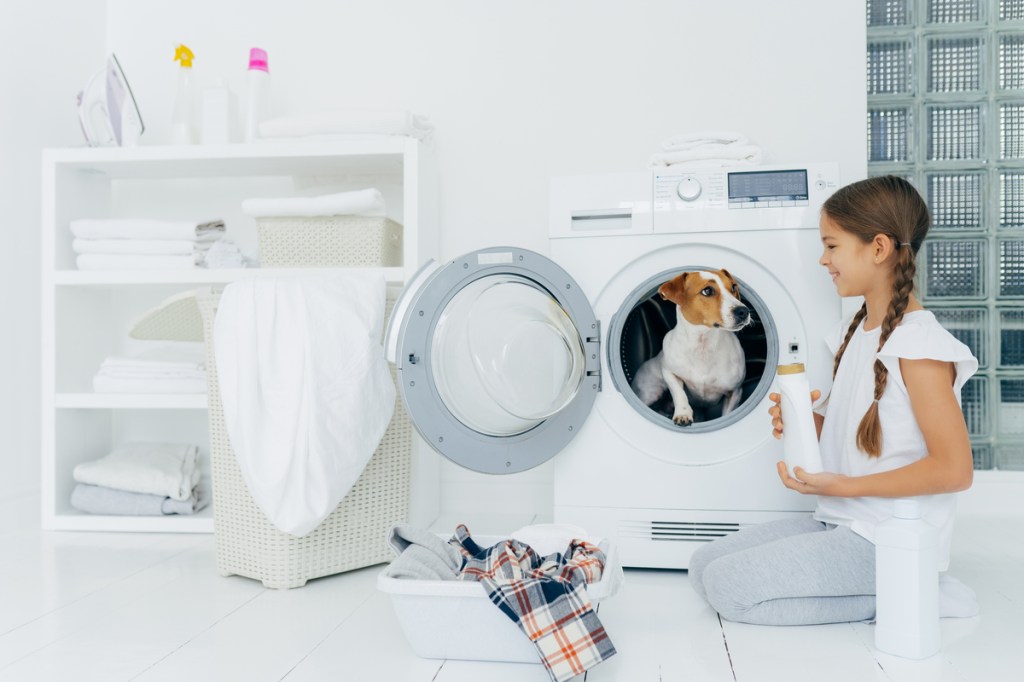Growth in the pet sector
The pet population has reached an all-time high in the U.S. with over 70% of households (91 million homes) currently owning a pet, according to the American Pet Products Association’s 2021-2022 National Pet Owners Survey. According to NielsenIQ data, these owners spent $66 billion on their pets last year.
Values matter a lot for pet owners. Many apply their convictions when deciding what they put in their pets (food and treats), what they put on their pets (treatments and grooming products), and what they use near their pets (toys and cleaning products).
Since the pandemic, owners have had more time to engage with their pets day-to-day, leading them to bring a “humanizing” approach to the foods and products they buy. This is an enduring trend. At the close of 2020, Time magazine declared, “Rescue Animals Are Time’s 2020 Pet of the Year” in a feature article that described how pandemic stay-at-home orders resulted in a pet adoption surge.
Pet products represent a highly dynamic department, with multiple strong growth drivers and behavioral changes in play, including:
- The pet care department growth is growing fast, and online sales are growing four times faster.
- “Clean and natural” attributes are prime motivations for pet owners, who increasingly regard their pets in humanized ways, and choose products accordingly
- Both search and sales trends in pet food indicate increased importance across key attributes such as “human-grade,” clean label (i.e. free from…), alternative proteins, ancient grains, and food as medicine
- Sustainability is a strong motivation for many pet owners
Let’s dive into each below.
Online outpaces in-store
The pet care dollar trend across all sales channels outperformed all other departments, posting a 17% increase from 2020 to 2021 to reach $66 billion. That reflects an omnichannel growth rate of 9.7% in stores, while online pet category sales advanced more strongly by 26.5% in the same period.
While first-time pet ownership has increased, existing pet consumers have driven these trends more than new households. New pet owners’ omnichannel dollar sales contributed 2.4% to category sales last year, while purchases by existing pet owners showed a net increase of 14.7%.
Pet care volume growth is seen across all selling channels, and online sales are expanding faster in nearly every sub-category. Dry dog food, the largest in volume with $30.4B in all-channel sales in 2021, grew at a healthy 5% rate overall, led by a 21% growth rate in digital sales.
Two other notable sub-categories stand out in this context. In 2021, online dollar growth in pet medicines, a $5.5 billion segment, led the sector at 44.5% alongside an 8.5% increase in-store. Pet toys, a $5.6 billion sub-category, were the fastest-growing segment in stores, ahead 21%, but online sales grew even faster, at 31%.
Notably, the shift toward online sales of pet products has been led by three key pet categories—pet treatments saw a contribution shift of 6% in dollar spending from stores to digital, while supplies and treatments saw shifts of 3%.
Clean labels lead the charge
NielsenIQ sales data reveals how pet owners are increasingly humanizing their pet care choices. Over the past two years, for example, products that claim to contain “human grade” ingredients grew 48% in dollar sales to reach $38 million in sales.
Many pet food purchases are driven by “free-from” and “meat first” preferences. As a result, products certified to be free from artificial ingredients grew 24% in sales during the past two years, to reach $1.5 billion in total sales, while foods that are free from artificial preservatives grew 23% to $2.9 billion.
An indication that the right protein sources matter to pet shoppers, pet foods claiming to be free from animal byproducts grew 24% to $138 million and those certified to have meat as the first ingredient grew at a rate of 19% to $3.1 billion.
Mass retailers and online merchants have been key drivers of the natural pet food trend. Pet owners who buy natural pet food products tend to stick with it, with 41% purchasing products labeled “natural” five or more times a year.
While pet store chains still command a slight edge in terms of attribute share (27%), mass merchants and supercenters are closing in at 26%. The fastest gains in natural pet food sales are happening online, which accounts for 15% of the sector’s sales.
A proving ground for alt-proteins
Wellness-conscious pet owners are embracing ingredients other than the traditional chicken, beef, and lamb that have been staples in commercial pet foods for generations. Seafood, duck, and plant proteins can be increasingly found in higher-end foods and treats.
Pet food made with fish as a primary protein outpaced both chicken and beef from 2020–2021 with a 19% increase in dollar sales to reach $2.6 billion. Chicken, the number-one pet food protein form at $4.1 billion in sales, grew 16% during the same period, while beef grew 11% to $1.8 billion in sales in 2021.
On the plant-based side, pet foods made with oats and oat protein have come on strong in the last two years. Sales of products containing “oat protein” grew 31% to reach $898 million, while those containing “oats” grew faster, at 33% and $1.1 billion in volume.
Pet food made with “ancient grains” as a source of protein has enjoyed a very fast rate of growth over the same two-year period, surging 19% to $30 million. This is notable, since plant-based pet foods have remained flat at $9.4 million in sales, off 0.2% in the same time frame.
It may be no coincidence that the alt-protein trend in pet food surfaces at a moment when grocery shoppers have enthusiastically embraced “alt-meat” burger patties, sausage, and even seafood substitutes.
Gaining interest in the pet food industry is high-quality protein meal from insects such as crickets, black soldier fly larvae, and other insects. While insects have been slower to enter mainstream human diets, pet owners could be more open to the idea. The show floor at the Global Pet Expo 2022 was flooded with alternative protein options, showing that these alternative proteins are making their way into the consumers’ line of sight.
Insect protein hits several notes regarding nutritional attributes and sustainability, according to Pet Food Industry magazine. Dried cricket powder contains 69% protein, compared to sirloin beef (29%), dried beef (43%), and chicken (31%). It also contains nine essential amino acids, along with zinc, vitamin B12, iron, potassium, magnesium, sodium, and calcium.
As a result, a report from consulting firm MarketsandMarkets projects the global market for insect protein will grow from $144 million in 2019 to $1.3 billion by 2025.
Sustainable pet ownership
Pet owners want the brands and products they purchase to be environmentally sustainable and ethically made. Sales growth trends indicate that pet product manufacturers are meeting these preferences across multiple dimensions and consumers are responding.
The attributes “humane,” “ethical,” and “cruelty-free” naturally aligns with the values of pet owners and are associated with strong sales growth. Pet products identified as “certified human raised and handled” grew by 110% in sales over the last two years to account for $11 million in sales. “Ethical” products grew 48% to $11.7 million, while “cruelty-free” products increased by 10% to account for $18 million in sales.
Sustainable packaging claims have also seen substantial sales growth over the two-year period. Sales of products with “recycled packaging” grew 40% to $14.4 million, while products with “plastic free” packaging surged by 387% to reach $11.3 million.
Products boasting “sustainable packaging” are growing even faster with a 769% sales increase to $899,000 in sales over the past two years.
Supply chain headwinds
While pet product demand has sustained strong growth across the board for the past three years, the number of unique UPCs on the shelf declined by 2% in 2021 to 27,111, compared to 27,697 in 2020. This reduction in overall variety of 586 unique items reflects the broad supply chain issues that have affected consumer products during this period.
Dog treats led this loss of variety with 121 items cut from distribution in 2021, compared to just six in the prior year. Wet cat food also saw significant de-listings with 142 items cut, versus 106 in 2020. Meanwhile, cat treats lost 367 items in 2021 compared with 320 in 2020.




